Walking along mountain trails is good for physical health as well as mental health. Trekking is an activity that is best done in arid countries like Nepal. A valuable article has been published before about the healing of the mind through nature trips.
This article contains details about a trek I went to Mardi Himal in Nepal. Although the article is quite long, I think this will be a very enjoyable article for anyone who wants to travel.
Mardi Himal

Annapurna, the icy mountain range that surrounds Pokhara in Nepal, has several famous treks. Among them Geropani Poonhill, Annapurna Base Camp, Gandrak etc. are the most popular. Mardi Himal is a fairly new, less popular route. At Mardi Himal, we will have the opportunity to climb to a height of about 4500 meters in two or three days and see the peaks covered with snow. So I chose it. 4500 meters high mountains are rare on the Himalayan border.
There are no mountains higher than 4000 meters in our neighboring South India and parts of Thailand and Indonesia on the other hand. It is indeed a blessing to have a mountain range with a height of more than 2000 meters in our country. The highest point on the entire Australian continent is not even 2000 meters high. So, although the height of Everest is half a foot, 4500 meters is a strange height for us.
Planning the trip
There should be some planning for a few days trip abroad. People in countries like ours have limited time to travel. We don’t have the financial ability and vacations to visit many countries for months like tourists in European countries. There are a number of Pokhara-based treks in Nepal. As well as one-day hikes, there are treks ranging from two-three days to 10-15 days, varying in difficulty and height. From it, we can choose a suitable trip according to our holiday size, physical strength and experience.
Mardi Himal is usually a 4-5 day trek. There also intermediate accommodation is found as in famous trekking journeys in Nepal. You can take food from them, have tea and rest and travel. A good bed of some quality can be had for as little as three or four rupees a night in most lodgings.
The beginning of the journey
I originally intended to hire a guide for my Mardi Himalayan trek for $25 per day. But at the small restaurant where I went to eat, I met a friendly European tourist. A Chinese girl enters the restaurant and takes photos all around, takes selfies, takes pictures of mountains, turns around and takes pictures of her friend. Her photo genius made me and the other European in the restaurant laugh.
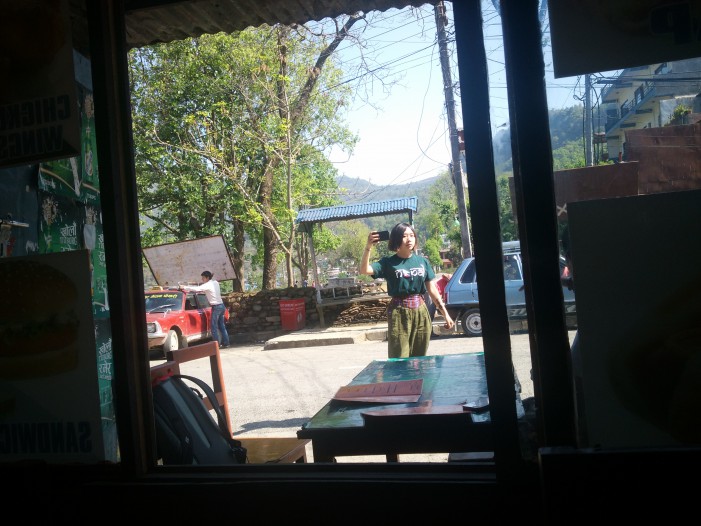
From that the European was the first. When he listened to my details, I told him about my Mardi Himal trip. He laughed loudly and said, “Man, I went there last year. Guides are not needed, the road is good. Don’t get lost, go alone,” he advised in English.
I had previously been aware of the permits required for Annapurna trekking and the foreigner explained the route to where the permit office is located. I went accordingly and got both the permits easily and I had taken 4 photographs required for that from Sri Lanka. South Asians also get a significant discount when buying a pass. It took 4-5 minutes for me to pay 4-5 km and walk to the permit office after having a good look at Vile Siriya.
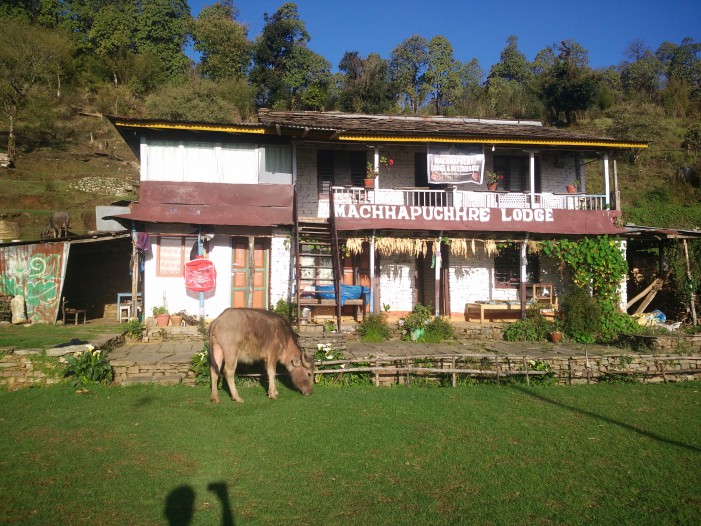
destination

I bought a good map of the Mardi Himal trek and left that evening. As my luggage was not suitable for mountain climbing, I bought a luggage for trekking and thought to travel by bus from Pokhara to the place called “Kade” first, after asking the directions from several people, I boarded the bus.
Even though he told me where to get off, the conductor was very enthusiastically flirting with a girl on the bus, so he missed where I should get off. Near Nayapool, where the most popular Poonhill trek starts, about 8 km away, he dropped me off without any hesitation, not caring at all that I was behind.
After hearing from a kind Nepali in Nayapool, I came back to Kade in a cab. I came and climbed to the Australian camp in Lahi Lahi.
It is a rough climb. Darkness will come from the pile of valuables. As in my time, another group also joined me. After two hours, it was about 7:00 p.m. and I reached the Aussie camp. There I booked a small room at Machapichu Lodge. Good food was also provided by my accommodation at Aussie Camp.
From Aussie Camp to High Camp..
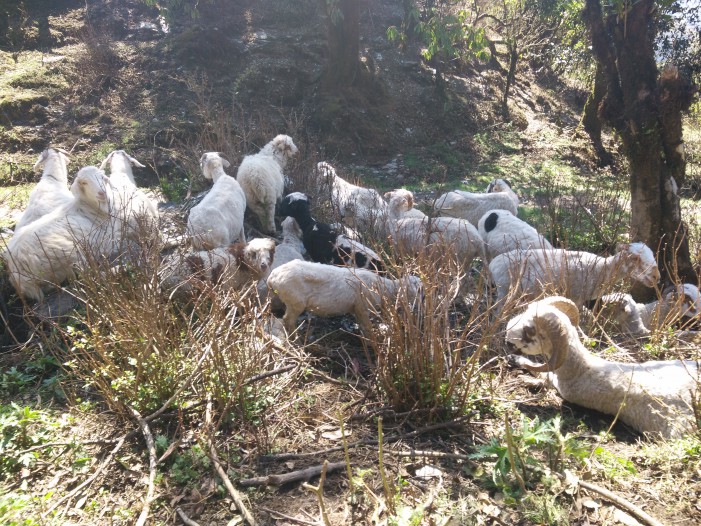
The morning view of the Australian camp is beautiful. The weather was perfectly clear the day I visited. The scenery on the hill was well visible. My friend’s Sri Lankan team that went there two days later was not so lucky. On the day they got there, the sky was dark and the weather was bad, so they missed the Aussie camp and most of the scenery.
No internet post shows the distance from OC Camp to High Camp in Mardi Himalayan trek. Because this is a two-day journey. Even if I rush and complete it in a day, the usual method is the same
Staying at a lodge along the way and then reaching the final stop, High Camp, the next day. But I thought it would be better to go on a journey than spend a few days in a cold place. Ossie camp is at a height of about 1500 meters. High Camp, the last camp in Mardi Himal where I stayed, was located at an altitude of 3500 meters. Its ascent is only two kilometers. Travel distance should be more than 12 km.
Mountain goats
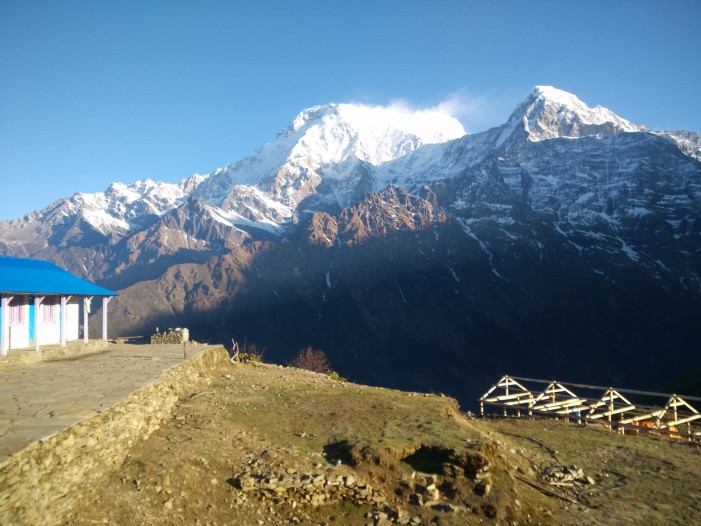
This walk is not a solitary walk. Different people from different countries meet on the way. Saying hi and hanging out with them on the journey is exhausting. Although not accompanied by a guide, the Nepalese guides quickly became friends with me. I did not stop at the pass check station on the way. They must have thought I was a Nepali by my looks. A Sherpa guide met on the way advised, “Enough for today, going any higher may be bad for my health”. But I didn’t pay attention to it and climbed up to the last camp.
In the mountains, butterflies etc. do not take different forms like in Sri Lankan forests like Sinharaja. There are many trees of the same species. But it would be better if you could see the mountain snow gorges and distant scenery with your own eyes rather than the camera. No matter how advanced the cameras are, they have not fully captured the sights we see, the birdsong we hear, and the coolness we feel.
From the highest shelter
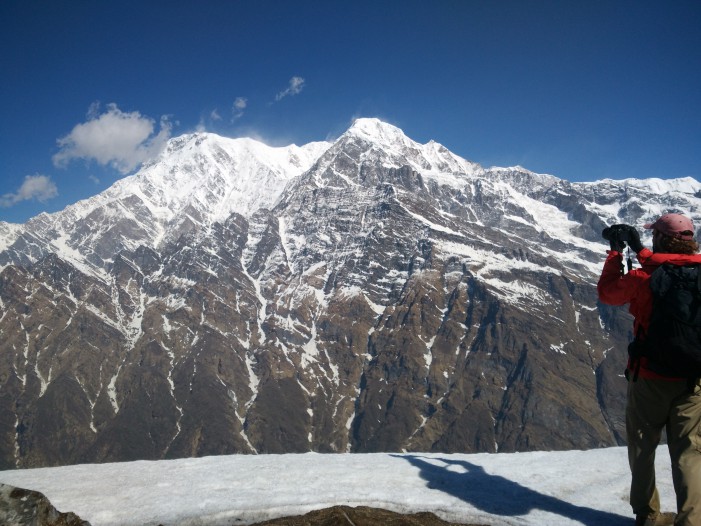
By the time I reached the highest stop, High Camp, it was around 6 pm. The arrival of a stranger hoping for shelter at such a time caused so much surprise to the foreigners and guides who were shivering in the cold in the shelter. Besides that, I was only wearing shorts and a t-shirt.
I quickly drank a cup of coffee and gathered around the fireplace with the people who were making a fire, before the cold weather came and took my time. The fireplace keeps the crowd warm until the evening meal, which is lit with wild wood. Not only the South Asians like me, but also the Western European French, German Italians, who have winters with freezing winters, were making fires hard to bear the cold. I was cold now too, but I managed to keep it off because of the warm muscles that had worked all day.
From the High Camp shelter

People who meet in such a place often talk about things like old friends. Some look at books, like a group of children in a village house without electricity, waiting for their mother to cook. Others play cards. Many Nepalis and foreigners relax by chatting.
The English language is like a rare commodity that I rarely use in Sri Lanka and that my grandparents take care of in Pettagama. But in foreign countries where we don’t know the language, I just cleaned it and re-polished it. To my surprise, many Nepalis, guides and Italians, French and Germans who were not familiar with English understood my simple language even though I thought that others did not understand my English. They did not use unintelligible grammar as Sri Lankan scholars often do. They were kind enough to exchange ideas in a very simple yet wide-ranging way.
Early in the morning
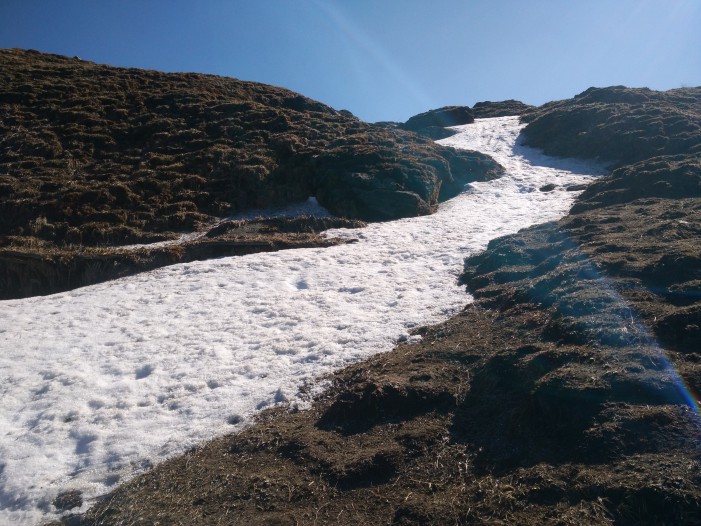
A small bed and a blanket were also provided, but sleep was difficult to achieve. A cold trickle enters from somewhere in the blanket. Everything around is cold as ice. These rooms are not special rooms heated by heaters.
Anyway, after a long night, the next day dawned. Early in the morning, the group went out to watch the sunrise over the mountain, and by that time there were patches of snow in the shelter yard. After a while, the melted snow began to fall from the shelter’s tin roof to the ground as water.
I deliberately started the journey at 8.30 am, a little late. I didn’t have any special cold clothes or snowshoe sticks. Although they should be carried, it seemed pointless to me to carry heavy winter clothes and support for the last leg.
From Mardi Himal Base Camp
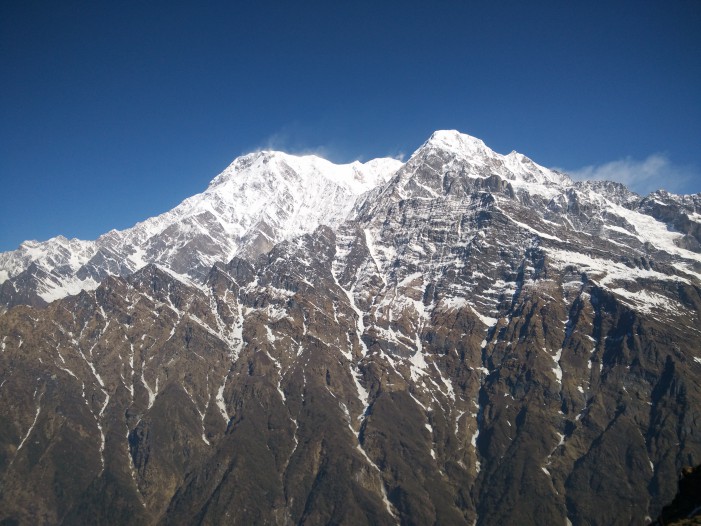
I took my breakfast and took some rest and after an hour’s drive I reached the view point at the top of the beautiful mountain with snow. Looking around you can see the white snow mountain. There is continuous snow on the ground in some places. On my feet were two shoes suitable for walking on snow. But there was no support or special cold clothing.
A small shop at Upper View Point. I forgot the water bottle, so half a bottle of water was filled from there for two hundred rupees, but that water was old water with no less taste of plastic.
Although my body was a little uncomfortable, I continued to walk as I did not feel any severe discomfort. Finally I reached the sign called Mardi Himal Base Camp after walking and climbing on rocks. There is also snow around. However, I am happy that I have finally achieved my goal. By that time, the people who came in the morning had already left. Others can be seen in the distance, scurrying across the snow. Since I was the only one, I took pictures of me and Madi Himal on the board with the selfie camera of my phone.
The sun was shining that day. 4500 meters is not an altitude that usually causes significant health problems. Above 6000 meters it is best to climb equipped with special cold jackets, shoes, gloves, masks, and sticks.



